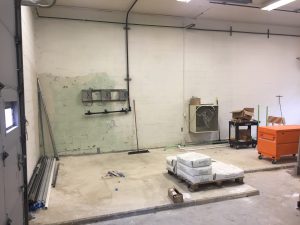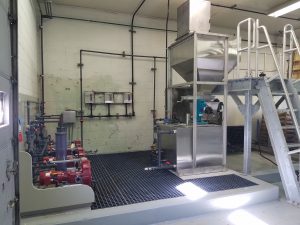Phosphorous is a nutrient that increases plant growth and also helps the crops, but it is not conducive to the aquatic system because it causes preferential growth of plants over other wildlife which is known as eutrophication. A significant consequence of eutrophication can be algal blooms (cyanobacteria) in streams, rivers and lakes, some of which produce toxins that are harmful to animals.
How does phosphorous get into our water systems in the first place? Although communities avoid adding more phosphorous to the water supply system, and even though we haven’t used them in our detergents for years, rainwater runoff picks up phosphorous from lawn fertilizers, agriculture and animals. The rainwater runoff containing phosphorous ultimately ends up in our water supply systems which perpetuates the problem.
- Before the pH adjustment system installation
- After installation of the pH adjustment system
The West Goshen Sewer Treatment Plant recently installed an Enhanced Treatment System designed to significantly reduce the amount of phosphorous in the wastewater discharged to Goose Creek. Prior to installing the new treatment system, the phosphorous concentration in the final wastewater effluent was a monthly average of between 1.5 mg/L and 2.0 mg/L (2 mg/L = 2 parts per million). Since the installation of the new treatment system that became operational in October 2018, the discharge concentration of phosphorous has fallen to below 0.8 mg/L, which is a reduction of over 50%.
In 2021, more improvements are budgeted for a major construction project, which will further enhance the wastewater quality by installing an additional phosphorous removal process. After the new treatment system becomes operational, the discharge concentration is anticipated to be below 0.1 mg/L, which represents a total phosphorous reduction from pre-2018 levels of greater than 95%.
The West Goshen Sewer Treatment plant continues to look for innovative ways to project the environment and ultimately the citizens of West Goshen Township.

